How To Fix Slip Indicator Light Nissan Altima? 7 Easy Steps
Are you looking for a How To Fix Slip Indicator Light Nissan Altima? If you’re driving a Nissan Altima and notice that the Slip Indicator Light has come on, it’s crucial to address the issue immediately. This light is an essential part of your vehicle’s traction control system, designed to alert you about potential problems affecting your car’s grip on the road.
Ignoring this warning can compromise your safety and lead to more severe mechanical issues down the line. In this comprehensive guide, we’ll walk you through the steps to diagnose and fix the Slip Indicator Light issue effectively.
How To Fix Slip Indicator Light Nissan Altima?

Step 1: Initial Diagnosis
The first step in resolving the Slip Indicator Light issue is to perform an initial diagnosis. Turn off your Nissan Altima, wait for a few minutes, and then restart it. Sometimes, this simple action can reset the system and turn off the light.
Step 2: Check Brake Fluid Levels
Open the hood and locate the brake fluid reservoir. If the fluid level is low, this could be triggering the Slip Indicator Light. Fill it up to the recommended level with the appropriate brake fluid.
Step 3: Use an OBD-II Scanner
Plug in an OBD-II scanner to the diagnostic port, usually located under the dashboard. Run a scan to check for any error codes related to the traction control system. Note down the codes for further investigation.
Step 4: Inspect the Tires
Check the condition of your tires. Worn-out or unevenly worn tires can cause the Slip Indicator Light to come on. If necessary, replace the tires or have them rotated to ensure even wear.
Step 5: Check the Sensors
Your Nissan Altima has various sensors like ABS and speed sensors that are part of the traction control system. Inspect these sensors for any visible damage or loose connections. If you find any issues, you may need to replace the sensors.
Step 6: Consult a Professional
If you’ve tried all the above steps and the Slip Indicator Light is still on, it’s time to consult a professional mechanic. They can perform advanced diagnostics and repairs to resolve the issue effectively.
Step 7: Test Drive
After all repairs and adjustments are made, take your Nissan Altima for a test drive to ensure that the Slip Indicator Light stays off. Monitor the vehicle’s performance and make sure there are no other warning lights on the dashboard.
Tools Needed for DIY Fixes
To perform these DIY fixes, you’ll need the following tools:
- OBD-II Scanner
- Screwdriver
- Brake Fluid
What Does The Slip Warning Light Mean?
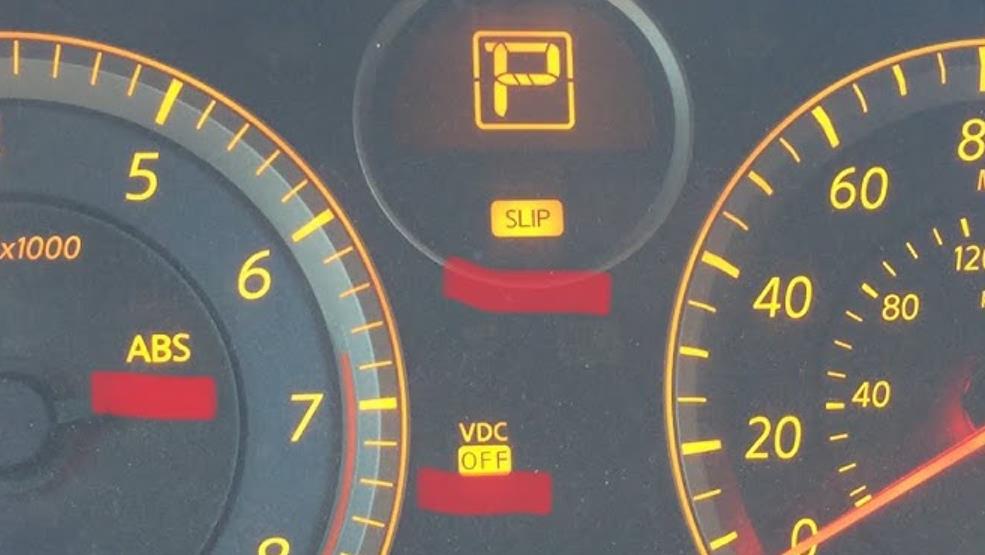
Understanding the Slip Warning Light
The Slip Warning Light is an integral part of your vehicle’s traction control system. When illuminated, it indicates that the system has detected a loss of traction or grip on the road.
This usually happens during slippery conditions, such as when driving on wet or icy roads. The light serves as a warning to the driver that the vehicle may not have optimal grip, increasing the risk of skidding or losing control.
The Role of the Traction Control System
The traction control system works in tandem with other systems in your vehicle, such as the Anti-lock Braking System (ABS) and the Electronic Stability Control (ESC).
When the Slip Warning Light comes on, it means that one or more of these systems have intervened to prevent a potential loss of control. The system may reduce engine power or apply brake force to specific wheels to help regain traction.
Implications of Ignoring the Light
Ignoring the Slip Warning Light can have serious consequences. If the light is on and you continue to drive without taking corrective action, you’re at a higher risk of experiencing a vehicle skid or even an accident.
It’s crucial to address the issue immediately, either by adjusting your driving behavior or by checking the vehicle for any mechanical issues that might have triggered the light.
Why Does It Matter?
Ignoring the Slip Indicator Light can lead to serious accidents. It’s not just a light on your dashboard; it’s a warning that something might be off with your vehicle’s traction control system.
Common Reasons Behind the Issue: What Causes The Slip Indicator Light To Stay On?
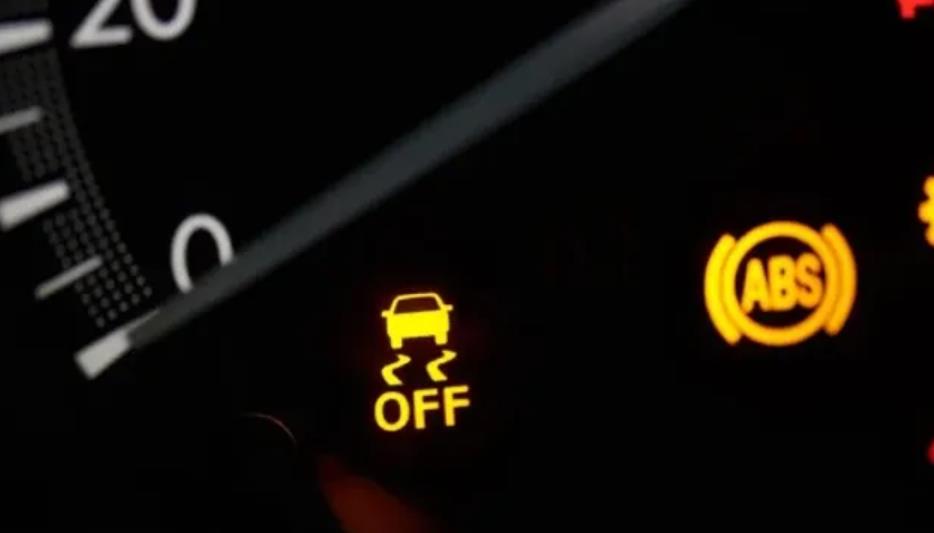
Low Brake Fluid Levels
One of the most common reasons for the Slip Indicator Light to stay on is low brake fluid levels. The brake fluid acts as a hydraulic medium, enabling the brake system to function correctly. When the fluid levels are low, the efficiency of the braking system is compromised, triggering the Slip Indicator Light as a warning.
Faulty Sensors
Your vehicle’s traction control system relies on various sensors, such as the ABS (Anti-lock Braking System) and speed sensors, to function correctly. These sensors monitor wheel speed and other parameters. If any of these sensors malfunction or fail, the system can’t accurately assess the vehicle’s traction status, causing the Slip Indicator Light to illuminate.
Worn-Out Tires
Tires play a crucial role in maintaining traction. Worn-out or unevenly worn tires can significantly reduce the vehicle’s grip on the road.
This loss of traction can trigger the Slip Indicator Light as the system detects the compromised road grip. Regularly inspecting and maintaining your tires can prevent this issue.
Electrical Issues
Sometimes, the problem could be electrical rather than mechanical. Loose connections, corroded wires, or a failing control module could send incorrect signals to the traction control system, causing the Slip Indicator Light to stay on. Electrical issues often require professional diagnosis and repair.
Software Glitches
Modern vehicles rely heavily on software to control various systems, including traction control. Software glitches or outdated firmware can cause the Slip Indicator Light to stay on erroneously. In such cases, a software update from the manufacturer might resolve the issue.
Mechanical Failures
In some cases, mechanical failures like a damaged wheel bearing or a malfunctioning throttle body can cause the Slip Indicator Light to stay on. These issues can affect the vehicle’s ability to maintain proper traction and require immediate attention.
When to Consult a Professional?
If the Slip Warning Light persists despite no apparent slippery conditions, it’s advisable to seek professional help. A constant light could indicate a malfunction in the traction control system or related components like sensors.
A professional mechanic can perform a thorough diagnostic to identify the root cause and fix it accordingly.
Signs You Need Professional Help
- Persistent Slip Indicator Light even after DIY fixes.
- Unusual noises from the car.
- Reduced vehicle performance.
Importance of Addressing This Issue
Don’t underestimate the importance of fixing this issue promptly. A malfunctioning Slip Indicator Light can compromise your safety and lead to costly repairs down the line.
Advanced Diagnostic Methods
When basic troubleshooting doesn’t resolve the issue, advanced diagnostic methods come into play. One such method is using a specialized diagnostic tool that can read advanced error codes related to the vehicle’s traction control system.
These tools are generally available at professional auto repair shops and provide a more in-depth analysis than standard OBD-II scanners.

The Role of Software Updates
Sometimes, the issue might be related to outdated software controlling the vehicle’s systems. Manufacturers often release updates to fix bugs or improve performance.
Check if your Nissan Altima has any pending software updates. If so, these updates could potentially fix the Slip Indicator Light issue.
The Cost Factor
Fixing the Slip Indicator Light can vary in cost depending on the underlying issue. If it’s a simple fix like topping off brake fluid or resetting the system, the cost will be minimal.
However, if the issue requires part replacements like sensors or even a new set of tires, you could be looking at a more substantial bill.
Warranty and Insurance
Before you spend money on repairs, check if your vehicle’s warranty covers the issue. Some warranties cover electrical and mechanical failures, which might include the Slip Indicator Light. Also, some insurance policies might cover the cost of repairs, so it’s worth checking both.
Long-Term Implications
Ignoring the Slip Indicator Light can have long-term implications for your Nissan Altima. For instance, a malfunctioning traction control system can lead to uneven tire wear, reducing the lifespan of your tires. Moreover, it can also affect the vehicle’s fuel efficiency.
Impact on Resale Value
A persistent issue like a malfunctioning Slip Indicator Light can significantly impact the resale value of your car. Prospective buyers are likely to be turned off by such issues, as they indicate potential safety risks and future repair costs.
Alternative Solutions
If you’ve tried everything and the Slip Indicator Light still won’t turn off, you might want to explore alternative solutions.
One such option is to disable the traction control system temporarily. However, this is not recommended for long-term use as it compromises safety.
Consult Online Forums
Online forums and communities can offer valuable insights and solutions that you might not find elsewhere.
However, take advice from these platforms with a grain of caution and always consult a professional for a second opinion.
Is It Safe To Drive With The Slip Light On?
Driving with the Slip Light on is generally not recommended, especially for extended periods or at high speeds.
The Slip Light serves as a warning that your vehicle’s traction control system has detected an issue, which could compromise your safety on the road.
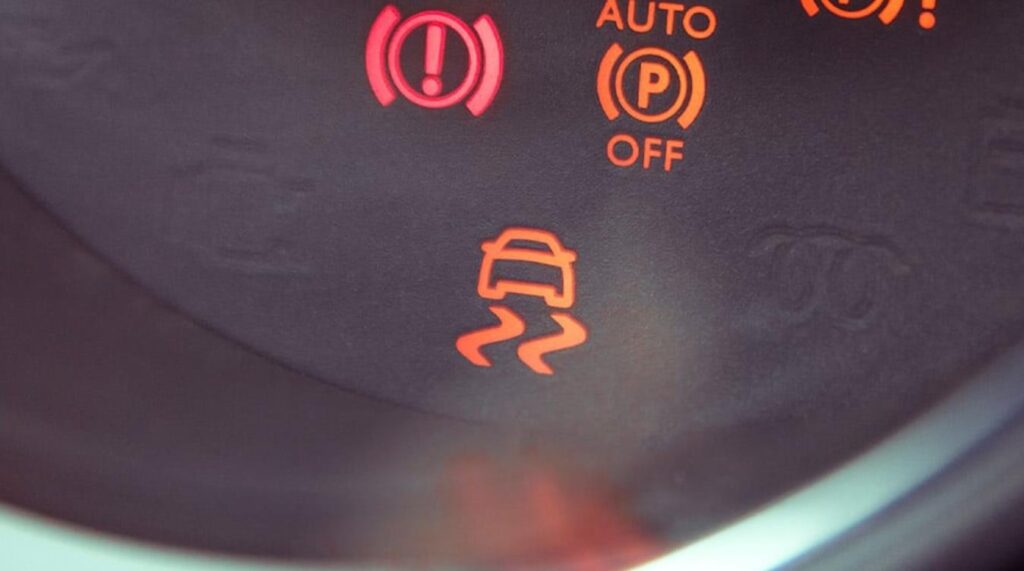
In slippery conditions, such as rain or snow, driving with the Slip Light on increases the risk of skidding or losing control of the vehicle.
If the light comes on, it’s advisable to pull over safely and diagnose the issue or consult a professional mechanic for a thorough inspection.
Why Is My Traction Control Light Staying On Nissan Altima?
If the Traction Control Light stays on in your Nissan Altima, it indicates a potential issue with the vehicle’s traction control system. Several factors could trigger this light, including:
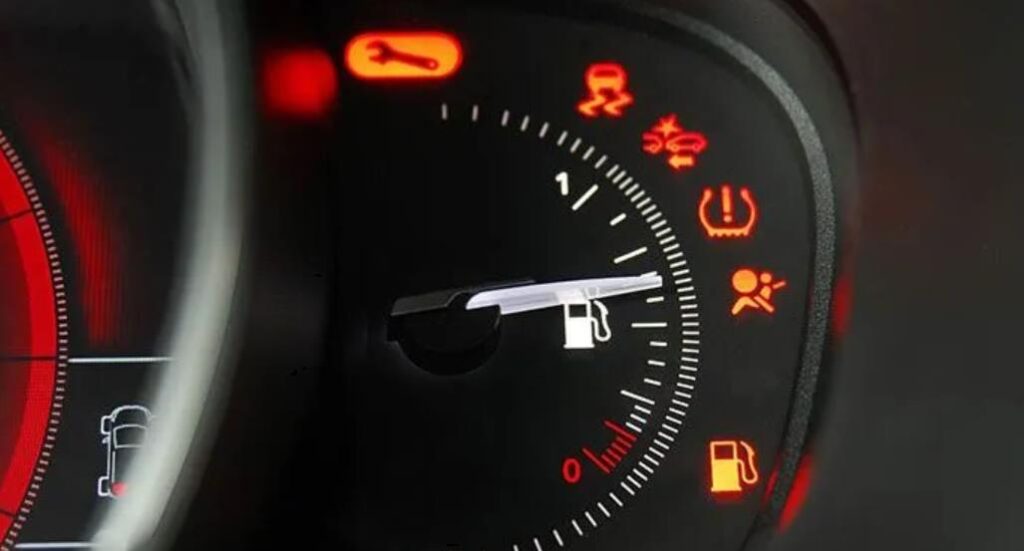
- Sensor Malfunctions: Faulty ABS or speed sensors can cause the Traction Control Light to stay on.
- Brake Fluid Levels: Low brake fluid levels can affect the braking system, triggering the light.
- Tire Conditions: Worn-out or unevenly worn tires can lead to reduced traction, causing the light to illuminate.
- Electrical Issues: Loose or corroded wiring can send incorrect signals to the traction control system, keeping the light on.
- Software Glitches: Outdated or buggy software can also cause the Traction Control Light to stay on erroneously.
It’s crucial to diagnose and address the issue promptly to ensure your safety and maintain optimal vehicle performance.
Conclusion
Fixing the Slip Indicator Light in your Nissan Altima is not just about turning off an annoying dashboard light. It’s about ensuring your safety and the optimal performance of your vehicle. If DIY fixes don’t resolve the issue, don’t hesitate to seek professional help.
From advanced diagnostics to understanding the cost implications, it’s crucial to tackle the problem comprehensively. Ignoring it is not an option, as it can have long-term consequences, including a reduced resale value for your vehicle.
People Also Ask
Is it expensive to fix the Slip Indicator Light issue?
The cost of fixing the Slip Indicator Light can vary widely depending on the root cause. Simple fixes like refilling brake fluid can be inexpensive while replacing faulty sensors or tires can be more costly. Always get a proper diagnosis and quote from a professional mechanic.
Can I fix the Slip Indicator Light issue myself?
Yes, there are some DIY fixes you can try, such as resetting the light, checking brake fluid levels, or inspecting the tires. However, if these don’t work or if you’re not comfortable performing these tasks, it’s best to consult a professional mechanic for a thorough diagnosis and repair.
How urgent is it to fix a Slip Indicator Light issue?
Ignoring the Slip Indicator Light is not an option. The light is a safety feature designed to alert you to potential issues with your vehicle’s traction control system. Failure to address the issue can lead to unsafe driving conditions and even accidents. Therefore, it’s crucial to take immediate action.

Welcome to the exhilarating world of Matt Rex, a professional car racer turned renowned vehicle enthusiast. Immerse yourself in his captivating blog as he shares heart-pounding adventures, expert reviews, and valuable insights on cars, trucks, jets, and more. Fuel your passion for speed and discover the beauty of vehicles through Matt’s engaging stories and meticulous expertise. Join the ever-growing community of enthusiasts who find inspiration and expert advice in Matt Rex’s blog—a digital hub where the thrill of speed meets the pursuit of knowledge.



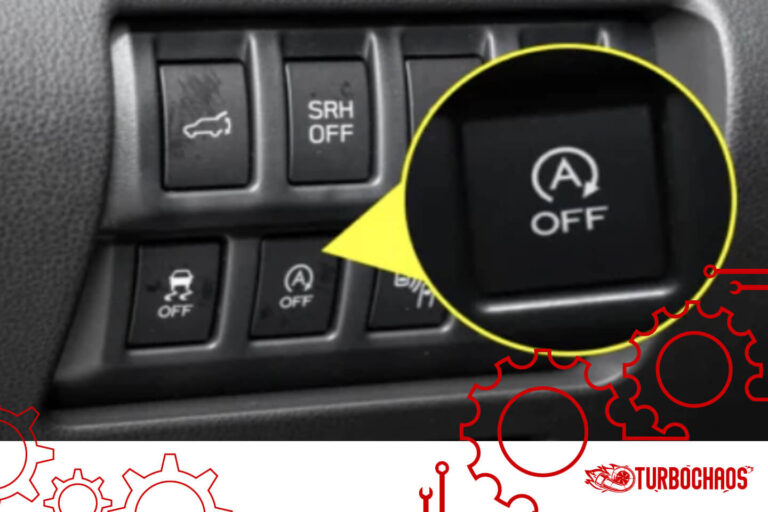
![Tesla Premium Connectivity Stopped Working [Causes + Fix]](https://www.turbochaos.com/wp-content/uploads/2023/08/Tesla-Premium-Connectivity-Stopped-Working.jpg)

![Does Nissan Armada Require Premium Gas? [Answered]](https://www.turbochaos.com/wp-content/uploads/2023/11/Does-Nissan-Armada-Require-Premium-Gas.jpg)